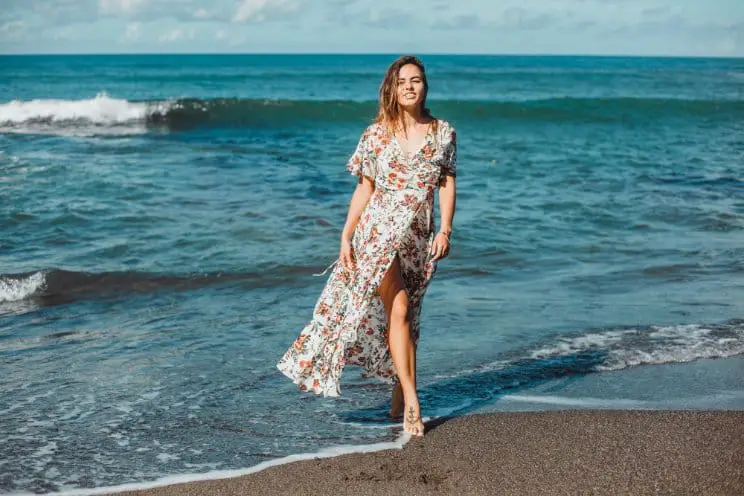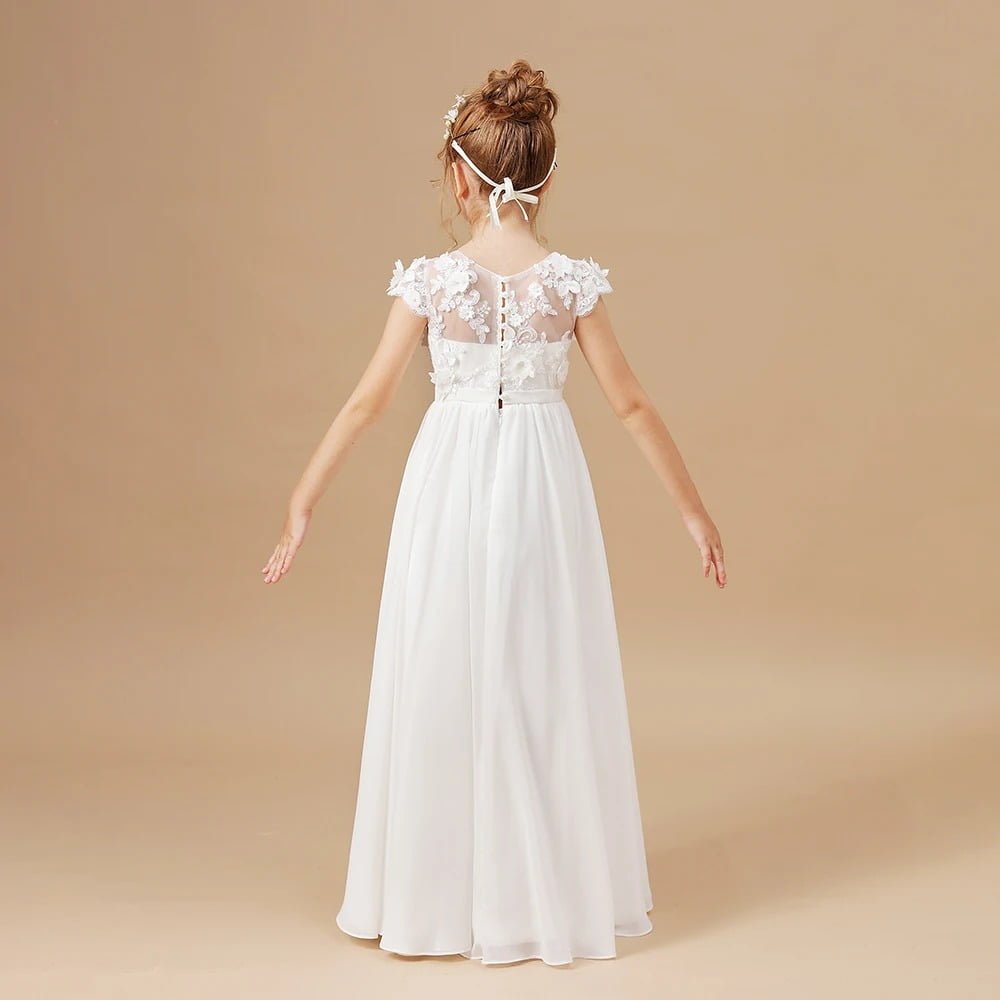Your ultimate resource for finding the perfect dress that flatters your figure and suits every occasion
Table of Contents
- What is a Dress? Understanding the Basics
- Interactive Dress Size Calculator
- Understanding Dress Types and Styles
- 2025 Dress Trends You Need to Know
- Choosing the Right Dress for Your Body Type
- How to Measure for the Perfect Fit
- Event-Specific Dressing Guide
- Seasonal Dress Styling Tips
- How Dresses Are Made
- Guide to Modest Dressing
- Advanced Styling and Accessories
- Dress Care and Maintenance
- Frequently Asked Questions
- Conclusion
What is a Dress? Understanding the Basics
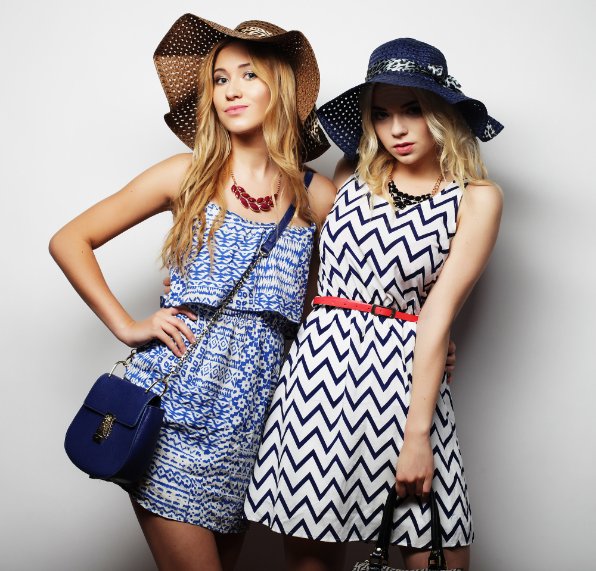
A dress is a single-piece garment that covers the torso and extends down to cover the legs, typically worn by women and girls. Unlike separates like tops and skirts, a dress is designed as one continuous piece, making it a versatile wardrobe staple that can take you from casual daywear to formal evening events with the right styling.
The beauty of modern dresses lies in their incredible variety. From flowing maxi dresses perfect for beach vacations to structured sheath dresses ideal for the office, there’s truly a dress for every woman, every occasion, and every personal style preference.
Essential Parts of a Dress
Understanding dress construction helps you make better choices:
- Bodice: The upper portion that covers the torso from shoulders to waist
- Skirt: The lower portion that extends from the waist down
- Neckline: The opening at the top that frames your face and neck
- Sleeves: Arm coverings that can range from sleeveless to full-length
- Hemline: The finished edge at the bottom that determines the dress length
Interactive Dress Size Calculator
Find Your Perfect Dress Size
Use our calculator to determine your dress size across US, UK, and EU standards. Take your measurements without wearing bulky clothing for the most accurate results.
Your Recommended Sizes:
International Dress Size Chart
| US Size | UK Size | EU Size | Bust (inches) | Waist (inches) | Hips (inches) |
|---|---|---|---|---|---|
| 2 | 6 | 34 | 32 | 24 | 34 |
| 4 | 8 | 36 | 34 | 26 | 36 |
| 6 | 10 | 38 | 36 | 28 | 38 |
| 8 | 12 | 40 | 38 | 30 | 40 |
| 10 | 14 | 42 | 40 | 32 | 42 |
| 12 | 16 | 44 | 42 | 34 | 44 |
| 14 | 18 | 46 | 44 | 36 | 46 |
| 16 | 20 | 48 | 46 | 38 | 48 |
Understanding Dress Types and Styles
The world of dresses offers endless possibilities, from casual everyday styles to show-stopping formal gowns. Understanding different dress types helps you build a versatile wardrobe that works for your lifestyle and personal taste.
Different Dress Lengths Explained
Mini Dress
Length: Above mid-thigh (typically 16-18 inches from waist)
Perfect for casual outings, parties, and showing off great legs. Pair with ankle boots or sneakers for day wear, heels for evening.
Midi Dress
Length: Between knee and ankle (typically 26-32 inches from waist)
The most versatile length that works for both professional and casual settings. Ideal for office wear, brunch, and semi-formal events.
Maxi Dress
Length: Ankle length or floor-length (typically 40+ inches from waist)
Elegant and comfortable, perfect for formal events, beach days, and summer evenings. Creates a graceful silhouette on most body types.
Tea-Length Dress
Length: Mid-calf length (typically 24-26 inches from waist)
Vintage-inspired length that’s perfect for cocktail parties, garden parties, and semi-formal daytime events.
Popular Dress Styles
A-Line Dresses
The most universally flattering style, A-line dresses fit snugly through the bodice and gradually flare out from the waist, creating an “A” shape. This silhouette works beautifully on all body types and is perfect for both casual and formal occasions.
Bodycon Dresses
Form-fitting dresses that hug your curves and celebrate your natural shape. Made from stretchy stretchy fabrics, these dresses are perfect for nights out and cocktail parties when you want to make a statement.
Wrap Dresses
Featuring a front closure that wraps around the waist, these dresses create a flattering V-neckline and define your waistline. The wrap style is incredibly versatile and works well for both office wear and weekend outings.
Shift Dresses
Characterized by their straight, boxy silhouette that hangs loosely from the shoulders. Shift dresses are comfortable, easy to wear, and perfect for those who prefer a relaxed fit that doesn’t cling to the body.
Fit-and-Flare Dresses
Similar to A-line but with a more pronounced fitted bodice and fuller skirt. This style emphasizes the waist and creates an hourglass silhouette, making it particularly flattering for pear and apple body shapes.
Sheath Dresses
Close-fitting dresses that follow the body’s natural lines without being tight. Perfect for professional settings and formal events, sheath dresses create a sophisticated, polished look.
2025 Dress Trends You Need to Know
🌊 2025 Trend Alert: Aquatic Influences
This year’s biggest trend draws inspiration from the ocean with turquoise colors, mermaid-inspired elements, and flowing fabrics that mimic water movement.
Strapless Revival
Strapless dresses are making a major comeback, projected to increase by 15% in 2025. Look for heart-shaped necklines and structured bodices for the most on-trend options.
Cape Details
Dresses featuring cape-like elements or flowing panels are defining elegance in 2025. Perfect for adding drama to evening wear or sophistication to day dresses.
Halter Necklines
The halter style has been completely reimagined for 2025, moving away from Y2K associations to sophisticated, modern designs in neutral and bold colors alike.
Draped Elegance
Delicately draped fabrics create beautiful, fluid silhouettes. This trend celebrates feminine grace with midi, mini, and maxi lengths all featuring artistic draping.
Aquatic Blues
Turquoise is forecasted to increase by 8% this summer, while mermaid-inspired sequins and fishtail silhouettes are expected to grow by 20% and 17% respectively.
Reality Dressing
2025 embraces practical elegance with softer fabrics, relaxed silhouettes, and comfortable fits that transition seamlessly from day to evening.
The key to incorporating 2025 trends is choosing pieces that align with your personal style and lifestyle needs. You don’t need to embrace every trend; instead, select one or two that resonate with you and integrate them thoughtfully into your existing wardrobe.
Choosing the Right Dress for Your Body Type
The most important aspect of dress selection isn’t following trends blindly, but finding styles that make you feel confident and comfortable. Understanding how different dress styles work with various body shapes helps you make choices that highlight your best features.
Hourglass Figure
Best Styles: Wrap dresses, fit-and-flare, bodycon, belted styles
Why it works: These styles emphasize your naturally defined waist and celebrate your balanced proportions.
Avoid: Shapeless shifts or overly loose styles that hide your waist
Pear Shape
Best Styles: A-line, fit-and-flare, off-shoulder, boat neck
Why it works: These styles draw attention to your upper body while gently skimming over hips.
Styling tip: Look for details like embellishments or interesting necklines to balance your silhouette
Apple Shape
Best Styles: Empire waist, A-line, wrap dresses, V-neck styles
Why it works: These styles create definition above your natural waist and flow gracefully over your midsection.
Fabric choice: Choose draping fabrics that don’t cling
Rectangle Shape
Best Styles: Peplum, ruffled, belted dresses, bodycon with strategic details
Why it works: These styles create the illusion of curves and add visual interest to your silhouette.
Detail focus: Look for dresses with waist definition, ruffles, or asymmetrical elements
Inverted Triangle
Best Styles: A-line, fit-and-flare, straight-leg, minimal top details
Why it works: These styles balance broader shoulders by adding volume to the lower half.
Neckline guide: Choose simple necklines and avoid shoulder pads or busy upper details
Plus Size Styling
Best Styles: Wrap dresses, A-line, empire waist, strategic ruching
Why it works: These styles create beautiful silhouettes while providing comfort and confidence.
Key tip: Focus on fit over size numbers, and choose styles that make you feel amazing
Hiding Belly Fat: What Works
If you’re looking to minimize your midsection, consider these flattering options:
- Empire waist dresses: Draw attention upward and flow away from the tummy
- A-line styles: Skim over the midsection without clinging
- Wrap dresses: Create a slimming V-shape and define the waist higher up
- Ruched details: Strategic ruching can camouflage and create texture
- Dark colors: Navy, black, and deep jewel tones are naturally slimming
How to Measure for the Perfect Fit
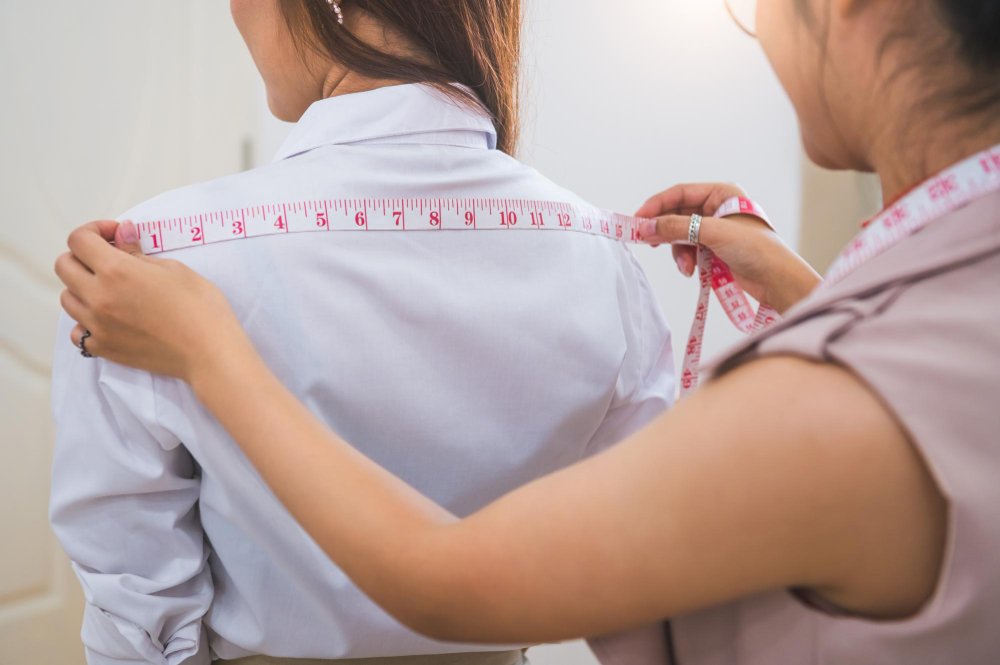
Getting accurate measurements is crucial for finding dresses that fit perfectly, especially when shopping online. Here’s your complete guide to measuring yourself properly.
What You’ll Need
- Flexible measuring tape
- A friend to help (recommended)
- Form-fitting clothes or underwear
- A mirror
- Pen and paper to record measurements
How to Measure Bust
The bust measurement is taken at the fullest part of your chest. Here’s how to do it correctly:
- Wear a well-fitting, non-padded bra
- Wrap the measuring tape around your back and across the fullest part of your bust
- Keep the tape parallel to the floor and snug but not tight
- Take the measurement at the end of a normal exhale
- Record the measurement to the nearest half-inch
How to Measure Waist
Your natural waist is typically the narrowest part of your torso, usually about an inch above your belly button:
- Stand straight and breathe normally
- Locate your natural waist (bend to the side to find where you crease)
- Wrap the tape around your waist, keeping it parallel to the floor
- The tape should be snug but not tight
- Don’t suck in your stomach – measure your natural waist
How to Measure Hips
Hip measurement is taken at the fullest part of your hips and buttocks:
- Stand with your feet together
- Find the fullest part of your hips (usually 7-9 inches below your waist)
- Wrap the measuring tape around your hips, keeping it parallel to the floor
- Make sure the tape lies flat against your body all around
- Take the measurement without pulling the tape too tight
Where Can I Get Professional Dress Measurements?
If you want professional measurements, visit:
- Department stores: Many offer free measuring services
- Bridal shops: Expert fitters who specialize in precise measurements
- Tailors: Professional alterations shops provide accurate measurements
- Online services: Some brands offer virtual fitting consultations
Event-Specific Dressing Guide
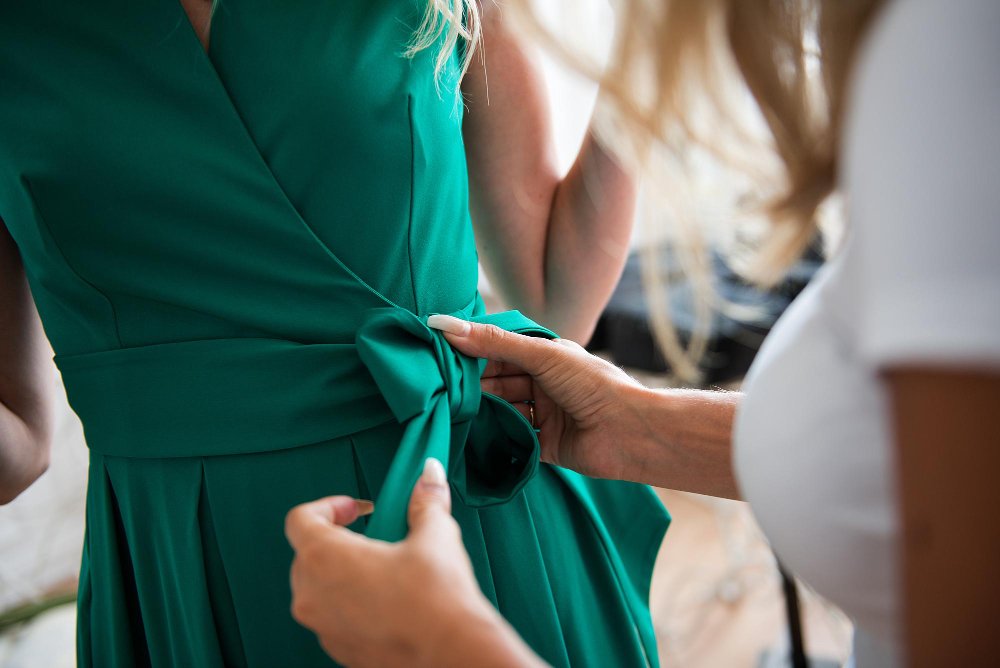
Different occasions call for different dress styles and levels of formality. Understanding dress codes helps you make appropriate choices while still expressing your personal style.
Business Casual and Professional Attire
Are Dresses Business Casual?
Yes, dresses can absolutely be business casual when chosen thoughtfully. The key is selecting appropriate styles, lengths, and fabrics that maintain a professional appearance.
Business Casual Dress Guidelines
- Choose knee-length or longer hemlines
- Opt for modest necklines (avoid deep V-necks or strapless)
- Select structured fabrics like cotton, wool blends, or ponte knits
- Stick to solid colors or subtle patterns
- Ensure sleeves or appropriate coverage
- Pair with blazers for more formal meetings
Professional Dress Options
- Sheath dresses: Classic, tailored fit perfect for the office
- Shift dresses: Comfortable and professional when properly fitted
- Wrap dresses: Flattering and appropriate in conservative prints
- A-line dresses: Versatile and suitable for most body types
You can find professional dress options at department stores, specialty work wear retailers, and online dress collections that cater to working women.
Wedding Guest Dress Codes
Wedding guest attire requires careful consideration of the dress code, venue, and time of day. Here’s your complete guide to wedding guest dressing.
| Dress Code | What to Wear | What to Avoid |
|---|---|---|
| Casual | Sundresses, midi dresses, nice separates | Athletic wear, flip-flops, overly revealing styles |
| Semi-Formal | Cocktail dresses, dressy separates, knee-length or longer | Mini dresses, casual fabrics, sneakers |
| Formal | Evening gowns, sophisticated cocktail dresses | Short dresses, overly casual styles |
| Black-Tie | Floor-length gowns, elegant fabrics | Anything above ankle length, casual fabrics |
Wedding Guest Color Guidelines
- Never wear white: This color is reserved for the bride
- Avoid ivory, cream, or off-white: These can photograph as white
- Red is generally acceptable: Unless specifically requested otherwise
- Black is fine for evening: Especially for formal weddings
- Consider the season: Light colors for spring/summer, richer tones for fall/winter
Can You Wear Short Dresses to a Wedding?
Short dresses can be appropriate for weddings, but consider these factors:
- Venue (beach weddings are more casual than church ceremonies)
- Time of day (daytime weddings are typically more casual)
- Season (summer weddings allow for more relaxed styles)
- Specified dress code on the invitation
Formal Event Guidelines
Understanding Formal Dress Codes
- White-tie: Most formal, requires floor-length gowns
- Black-tie: Formal evening wear, long dresses preferred
- Black-tie optional: Formal attire preferred but not required
- Cocktail: Semi-formal, knee-length to midi dresses appropriate
Prom Dress Code Guidelines
Most schools have specific prom dress codes. Common requirements include:
- Modest necklines and back coverage
- Appropriate length (usually finger-tip rule applies)
- No overly revealing cutouts or sheer panels
- Straps or sleeves may be required
Church Dress Codes
When attending religious services, modest dressing is typically expected:
- Cover shoulders and knees
- Choose conservative necklines
- Avoid overly tight or revealing styles
- Consider bringing a cardigan or scarf for additional coverage
Seasonal Dress Styling Tips
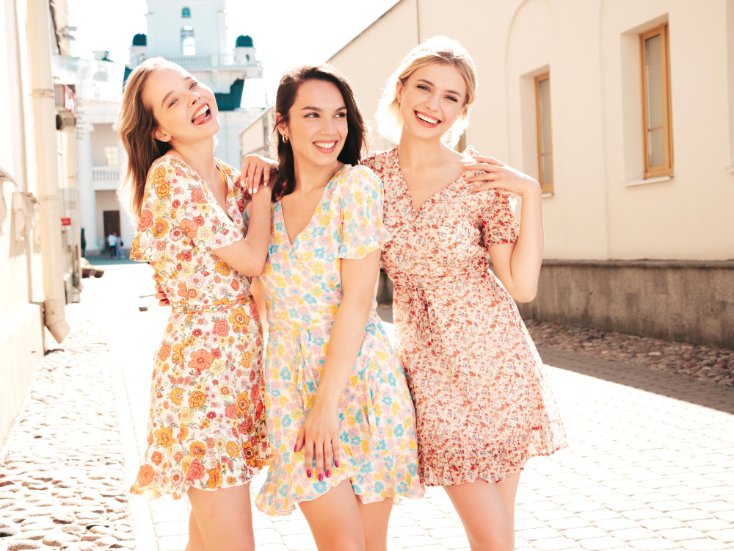
How to Wear Dresses in Winter
Don’t pack away your dresses when cold weather hits. With the right layering techniques, you can wear dresses year-round:
Layering Essentials
- Turtlenecks under sleeveless dresses
- Cardigans and blazers for warmth
- Tights or leggings for leg coverage
- Boots instead of sandals
Winter Dress Fabrics
- Wool blends for warmth
- Ponte knits for stretch and comfort
- Sweater dresses for cozy style
- Heavier cottons and denims
How to Wear Summer Dresses in Winter
Transform your favorite summer dresses for cold weather with these styling tricks:
- Add layers: Wear a fitted long-sleeve shirt underneath
- Cover up: Add a cozy cardigan or tailored blazer
- Change footwear: Swap sandals for ankle boots or knee-high boots
- Add tights: Choose opaque tights in complementary colors
- Accessorize: Add scarves and statement jewelry for warmth and style
Summer Dress Styling
Make the most of warm weather with these summer dress styling tips:
- Choose breathable summer fabrics like cotton and linen
- Opt for lighter colors to reflect heat
- Consider sleeveless or short-sleeve styles
- Pair with comfortable sandals or espadrilles
- Add sun hats and sunglasses for protection and style
How Dresses Are Made
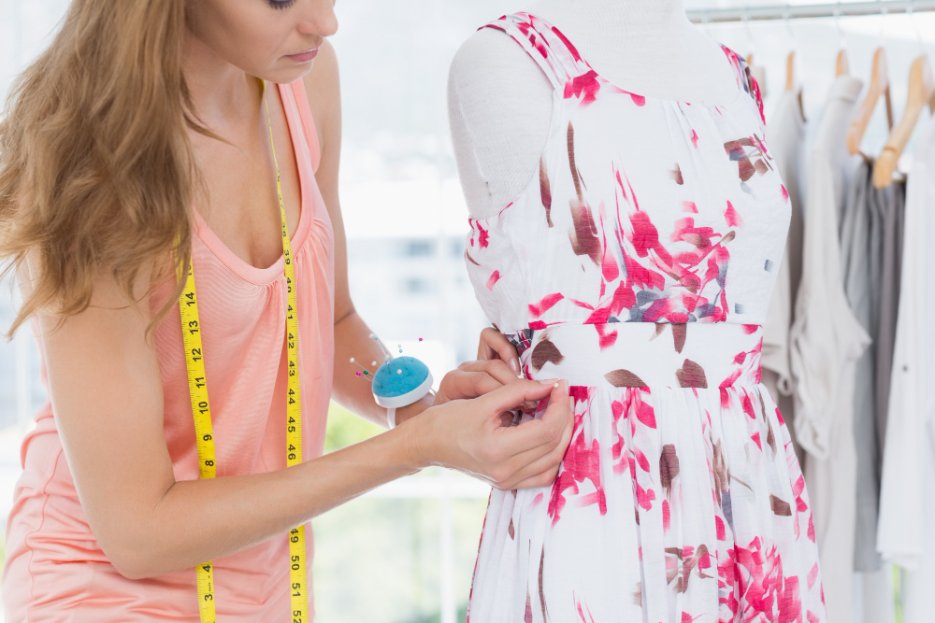
Understanding dress construction helps you appreciate quality and make better purchasing decisions. Here’s an overview of how dresses are created from concept to finished garment.
The Dress-Making Process
- Design: Sketching and conceptualizing the dress style
- Pattern making: Creating templates for cutting fabric pieces
- Fabric selection: Choosing appropriate textiles for the design
- Cutting: Using patterns to cut fabric pieces accurately
- Sewing: Assembling pieces using various stitching techniques
- Finishing: Adding details like zippers, buttons, and hems
- Quality control: Checking fit, finish, and overall quality
How Wedding Dresses Are Made
Wedding dress construction involves additional steps and specialized techniques:
- Multiple fittings: Usually 3-5 fittings for perfect fit
- Specialty fabrics: Silk, satin, lace, and tulle
- Hand-sewing: Many details are sewn by hand for quality
- Structural elements: Built-in bras, corsetry, and bustles
- Embellishments: Beading, embroidery, and beaded lace
- Preservation considerations: Special techniques for longevity
How Long Does It Take to Make a Dress?
The time required varies significantly based on complexity:
- Simple casual dress: 4-8 hours
- Semi-formal dress: 8-15 hours
- Formal evening gown: 20-40 hours
- Wedding dress: 40-100+ hours
- Haute couture: 100-300+ hours
Guide to Modest Dressing
What Does Modest Mean in Fashion?
Modest dressing involves choosing clothing that provides appropriate coverage while still allowing for personal style expression. The definition of modesty varies across cultures, religions, and personal preferences, but generally includes covering certain areas of the body and avoiding overly tight or revealing clothing.
How to Dress Modestly
Modest Dressing Guidelines
- Choose necklines that don’t reveal cleavage
- Ensure dress length covers the knees
- Select styles that aren’t overly form-fitting
- Cover shoulders and upper arms when required
- Avoid sheer or see-through fabrics
- Consider cultural and religious requirements
How to Wear Short Dresses Modestly
If you love shorter dress styles but need modest coverage, try these techniques:
- Layer with leggings: Wear full-length leggings underneath
- Add a long cardigan: Create visual length with layering
- Use layering pieces: Wear a longer shirt or tunic underneath
- Choose midi lengths: Opt for longer hemlines that still feel youthful
- Consider cultural context: Adjust based on the setting and occasion
Modest Dressing in Different Contexts
Can You Wear Dresses in Dubai?
Yes, you can wear dresses in Dubai, but it’s important to choose modest styles:
- Cover shoulders and knees in public areas
- Avoid low necklines and tight-fitting styles
- Beach resorts and hotels typically have more relaxed dress codes
- Shopping malls and restaurants expect modest attire
- Always respect local customs and religious sites
Can You Wear Dresses in Japan?
Dresses are perfectly acceptable in Japan. Consider these cultural preferences:
- Conservative styles are generally preferred
- Avoid overly revealing clothing in business settings
- Temples and shrines may require additional coverage
- Fashion districts like Harajuku embrace diverse styles
- Quality and neat appearance are highly valued
Advanced Styling and Accessories
Do You Wear Bras with Dresses?
The type of undergarments you choose depends on the dress style and your comfort level:
Strapless Dresses
- Strapless bras with good support
- Adhesive bras for lighter support
- Built-in bras (some dresses include these)
- Corsets for formal wear
Backless Dresses
- Adhesive backless bras
- Low-back bra converters
- Stick-on cups
- Fashion tape for security
Thin Strap Dresses
- Strapless bras
- Convertible straps
- Built-in shelf bras
- Bralettes for casual styles
How to Wear a Dress Without a Bra
For those who prefer going braless or need alternatives:
- Choose dresses with built-in support: Look for shelf bras or built-in bras
- Use fashion tape: Secure necklines and prevent wardrobe malfunctions
- Try adhesive products: Stick-on bras or nipple covers for minimal coverage
- Layer strategically: Camisoles or tank tops can provide coverage
- Consider fabric: Thicker fabrics provide natural coverage
Creative Dress Styling Ideas
How to Wear a Dress as a Skirt
Transform dresses into skirts with these techniques:
- Tuck the top portion into the waistband
- Wear a belt to secure the excess fabric
- Layer a fitted top over the dress bodice
- Use a cardigan or blazer to cover the dress top
- Try the “fake tuck” method with strategic styling
Ways to Wear an Infinity Dress
Infinity dresses offer multiple styling options:
- Classic halter: Cross straps behind the neck
- One-shoulder: Wrap one strap over one shoulder
- Strapless: Tuck straps inside for a bandeau look
- Cap sleeves: Create sleeves by looping straps over shoulders
- Criss-cross back: Cross straps behind for back detail
What Jacket to Wear with Dresses
The right jacket can transform any dress:
- Blazers: Perfect for professional and semi-formal occasions
- Denim jackets: Casual, versatile option for day wear
- Leather jackets: Add edge to feminine dresses
- Cardigans: Soft, comfortable layering for any season
- Bomber jackets: Modern, sporty look for casual dresses
Dress Care and Maintenance
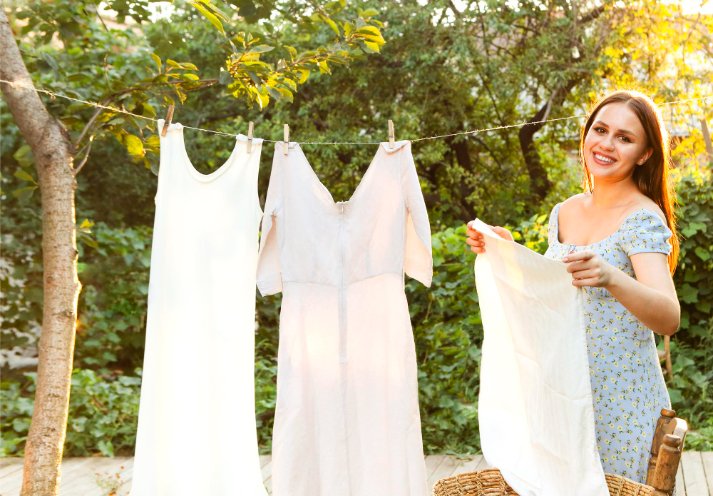
Proper care extends the life of your dresses and keeps them looking their best. Different fabrics require different care approaches, so always check the care label first.
General Dress Care Guidelines
Essential Care Steps
- Read and follow care labels on every garment
- Sort dresses by color and fabric type before washing
- Pre-treat stains immediately for best results
- Use appropriate water temperature for each fabric
- Air dry when possible to prevent shrinking
- Store dresses properly to prevent wrinkles and damage
Fabric-Specific Care
- Cotton: Machine washable, can handle warm water, iron while damp
- Silk: Hand wash or dry clean, cool water, low heat ironing
- Wool: Dry clean preferred, or gentle hand wash in cool water
- Polyester: Machine wash warm, tumble dry low, easy care
- Linen: Machine wash cool, air dry, iron while slightly damp
For detailed care instructions for specific fabrics, check our guides on cotton care, silk care, and caring for different fabrics.
Can You Get Dresses Altered to Be Bigger?
While it’s generally easier to make garments smaller, some dresses can be let out:
- Check seam allowances: Most alterations require at least 1 inch of extra fabric
- Consider dress construction: Some styles are easier to alter than others
- Professional assessment: A skilled tailor can advise on possibilities
- Cost considerations: Sometimes it’s more economical to buy a new dress
- Alternative solutions: Side panels or inserts can add width in some cases
Can You Rent Dresses?
Dress rental is an excellent option for special occasions:
- Formal events: Rent expensive evening gowns and cocktail dresses
- Cost savings: Wear designer dresses at a fraction of retail price
- Sustainability: Reduce waste by sharing garments
- Variety: Try different styles without commitment
- Popular services: Rent the Runway, Nuuly, and local boutiques offer rentals
Frequently Asked Questions
A-line dresses, empire waist styles, and wrap dresses are most effective at minimizing the midsection. Look for dresses that flow away from the body rather than clinging, and consider styles with strategic ruching or draping that camouflages the tummy area.
The wrap dress is often considered the most universally flattering style because it creates a defined waist, flattering V-neckline, and works well on various body types. A-line dresses are also highly flattering as they skim over problem areas while highlighting the waist.
Consider your body type, lifestyle, and personal preferences. Try different styles to see what makes you feel confident. Look at your existing wardrobe for patterns in what you gravitate toward, and consider your daily activities and the occasions you dress for most often.
Midi length (hitting between the knee and ankle) is generally the most flattering and versatile length for most women. It’s appropriate for various occasions and body types, while being neither too casual nor too formal.
Pantyhose are optional in modern fashion. For professional settings or formal events, sheer pantyhose can add polish. In casual settings, bare legs are perfectly acceptable. Consider the season, occasion, and your personal comfort when deciding.
This is a bridal measurement taken from the hollow of the throat (the small dip at the base of your neck) straight down to the floor. It’s used to determine the proper length for wedding dresses and formal gowns to ensure the correct hem length.
A well-fitting dress should be comfortable to move in, not pull or gap anywhere, have appropriate length for the occasion, allow you to sit and move freely, and make you feel confident. The fabric should lie smooth without pulling or bunching.
Form-fitting dresses are commonly called “bodycon” dresses (short for body conscious). These dresses hug the curves of the body and are typically made from stretchy materials like spandex blends or jersey knits.
Conclusion
Finding the perfect dress is about understanding your body, knowing your personal style, and choosing pieces that make you feel confident and comfortable. The dress landscape in 2025 offers incredible variety, from trending aquatic-inspired designs to timeless classics that never go out of style.
Essential Recommendations
Building Your Dress Wardrobe
- Invest in one perfect little black dress that can be styled multiple ways
- Choose quality over quantity – better to have fewer well-made dresses
- Consider your lifestyle and build around occasions you dress for most
- Take accurate measurements and use our size calculator for online shopping
- Don’t be afraid to try new styles – fashion should be fun and experimental
- Pay attention to fabric quality and care requirements
Key Styling Insights
Remember that the “rules” of fashion are meant to be guidelines, not rigid requirements. The most important factor in choosing any dress is how it makes you feel. A dress that gives you confidence and comfort will always look better than one that technically “follows the rules” but doesn’t feel right for you.
As we move through 2025, embrace the trends that speak to you while building a foundation of classic pieces that will serve you well for years to come. Whether you’re drawn to the flowing elegance of aquatic-inspired designs or prefer the structured sophistication of traditional styles, there’s never been a better time to express your personal style through dresses.
Looking Forward
The fashion landscape continues to evolve, with sustainability, inclusivity, and comfort becoming increasingly important. Choose pieces that align with your values, fit your lifestyle, and bring you joy. With the right knowledge and confidence, you can navigate any dress-wearing situation with style and grace.
For more fashion insights and trends, explore our comprehensive guides on 2025 fashion trends and women’s clothing trends. Remember, the best dress is the one that makes you feel authentically yourself.


